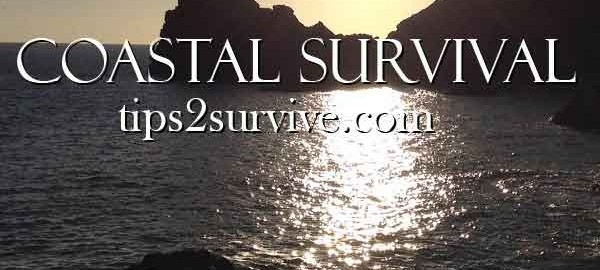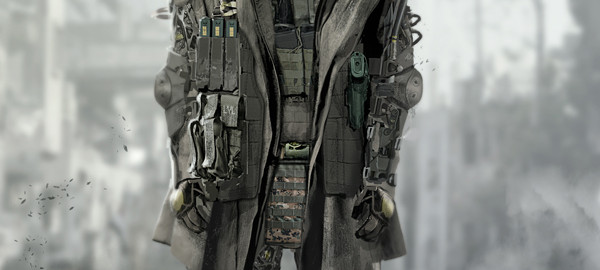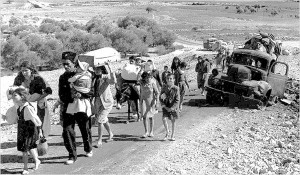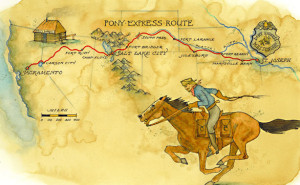If you live near the coast, you’re in a unique position allowing you to utilize resources from both land and sea. Since there have been and will be many land survival articles, I will focus on the sea aspect in this one.
We’ll start with water. Of course you can’t drink seawater,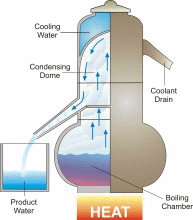 until you take the salt out. So how do you take the salt out? There are 3 principle types of desalinization, electrical, thermal, and pressure. Electrical desalinization is a process utilizing an electrical field to remove the salt. It’s technical and papers have been written by universities about it. Due to its complexity it’s really not a helpful process for the average person. Pressure desalinization is the act of using centrifugal force to pull the salt out of the water. Thermal desalinization is the oldest and most natural form of removing salt from seawater.
until you take the salt out. So how do you take the salt out? There are 3 principle types of desalinization, electrical, thermal, and pressure. Electrical desalinization is a process utilizing an electrical field to remove the salt. It’s technical and papers have been written by universities about it. Due to its complexity it’s really not a helpful process for the average person. Pressure desalinization is the act of using centrifugal force to pull the salt out of the water. Thermal desalinization is the oldest and most natural form of removing salt from seawater.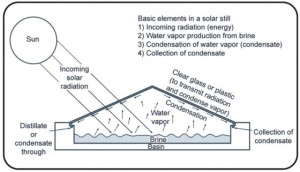 So natural, that it occurs by the sun everyday around the world. The water vapor forms clouds and then is released back to earth as rain. We can simply replicate this process a couple different ways. Either using a heat source and distilling the water, or utilizing the suns radiation in a solar still to evaporate the water.
So natural, that it occurs by the sun everyday around the world. The water vapor forms clouds and then is released back to earth as rain. We can simply replicate this process a couple different ways. Either using a heat source and distilling the water, or utilizing the suns radiation in a solar still to evaporate the water.
Shelter on the ocean is a serious problem. If you’re in the ocean, you have two serious concerns hypothermia and shark attack. Hypothermia is when the bodies core temperature falls below 95 degrees Fahrenheit. 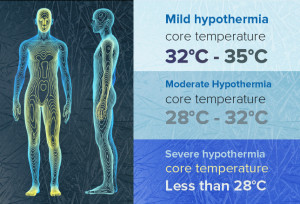 Due to water being an excellent conductor of heat, it can pull the heat out of a body, and since we lose like 80% of our body heat through our head and neck, keep them out of the water. Also don’t shed clothes, they will act as a barrier and your body will heat the water between your skin and your clothes acting as an insulation layer between you and the outside water. On a long enough timeline everyone’s survival rate drops to zero. If the water temperature is above 50 degrees Fahrenheit the danger for shark attack is elevated. The lower the water temperature, the greater the risk of hypothermia due to prolonged exposure, when exposed to cold water the Coast Guard’s 1-10-1 rule applies. The first stage in cold water exposure is Cold Water Shock, you have one minute to control your panic. Studies show that 20 percent of people exposed to cold water die in the first minute; they panic when they are first immersed, breathe in cold water and drowned. The next phase is Cold Water Incapacitation, over approximately 10 minutes you will lose effective control of your body, fingers, hands, legs and arms. You need to deal with self rescue during this brief phase because your ability to swim will become greatly reduced as time passes, if you aren’t wearing a life jacket at this point and are unable to get out of the water, the odds are pretty good you’re going to drown. The last phase is Hypothermia, you have approximately 1 hour, depending on water temperature, and physical condition until your body shuts down, you lose consciousness and die.
Due to water being an excellent conductor of heat, it can pull the heat out of a body, and since we lose like 80% of our body heat through our head and neck, keep them out of the water. Also don’t shed clothes, they will act as a barrier and your body will heat the water between your skin and your clothes acting as an insulation layer between you and the outside water. On a long enough timeline everyone’s survival rate drops to zero. If the water temperature is above 50 degrees Fahrenheit the danger for shark attack is elevated. The lower the water temperature, the greater the risk of hypothermia due to prolonged exposure, when exposed to cold water the Coast Guard’s 1-10-1 rule applies. The first stage in cold water exposure is Cold Water Shock, you have one minute to control your panic. Studies show that 20 percent of people exposed to cold water die in the first minute; they panic when they are first immersed, breathe in cold water and drowned. The next phase is Cold Water Incapacitation, over approximately 10 minutes you will lose effective control of your body, fingers, hands, legs and arms. You need to deal with self rescue during this brief phase because your ability to swim will become greatly reduced as time passes, if you aren’t wearing a life jacket at this point and are unable to get out of the water, the odds are pretty good you’re going to drown. The last phase is Hypothermia, you have approximately 1 hour, depending on water temperature, and physical condition until your body shuts down, you lose consciousness and die.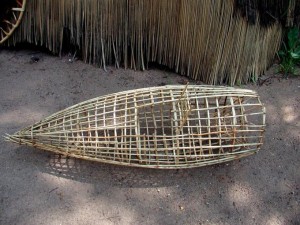
Another thing the ocean has in abundance is food; in the form of fish, shellfish and water fowl. Since this isn’t a hunting or fishing article, I won’t get in depth into gathering food but will touch on a few gathering techniques. You can of course always fish with a hook, line and pole. But there are several ways to harvest fish without a line and hook. There are several different types of commercial fish trap available for purchase, but you can also make one from sticks and twine, or using sticks in the sand you can make a tidal fish trap.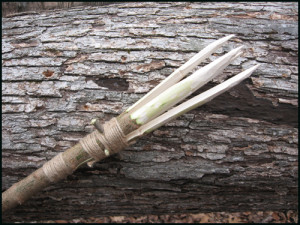 Making a fishing spear is also an option, it’s a little more complicated than just sharpening a stick, but still not very technical.
Making a fishing spear is also an option, it’s a little more complicated than just sharpening a stick, but still not very technical.
When you live near the ocean, like coastal dwelling people throughout history, you must master the sea and to do so you’re going to need a boat. I’m going to talk about boat building next week, but will talk this week a little about some aspects of their use.
When you’re standing on the beach and looking out to sea, due to the curvature of the earth, the horizon is only 8 miles away. You can see larger objects such as cruise ships or aircraft carriers out to 10-12 miles depending on their height but a small motor boat or row boat, you would be lucky to see at 8 miles. If you were sitting in a canoe or kayak out in the water your horizon would be down to perhaps 5-6 miles. This comes into play when we start talking about navigation.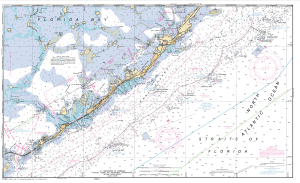
Whether you’re navigating on land or on sea, before you can plan where you’re going; first you must know where you are. To know where you are, you need a map or chart, a compass, and a straight edge. There are a few different grades of certainty that I want to talk about. If you look on your map and find a tower, an antenna, or even a notable landmark or pier that you can see from your location; take a bearing to the object and lay it out on your map with your straight edge, what you have now is a line of bearing. Find another object that is like 50-60 degrees off from the last, and lay it out on your map, you now have an estimated position. Repeating the process and at the point where the 3 lines meet is a fix, for most of what we’re doing here an estimated position will work for what we need, if you’re navigating a deep draft ship in close proximity to shoal water, knowing your exact location is crucial, however if you’re in a row boat, and you know where you are within 100 or 200 yards, you will be fine because from there you can visually navigate to where you want to go.
